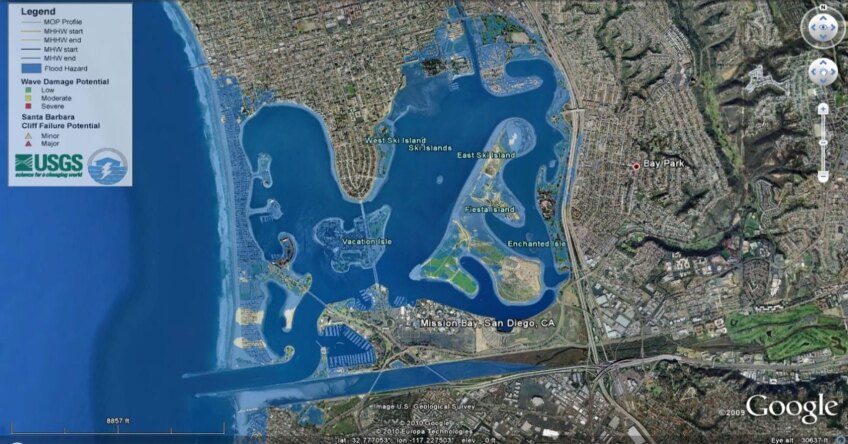5 Things You Need to Know About the ARkStorm, California's Other 'Big One'

This article was updated on January 25, 2024.
What can California's geologic history teach us? For one, the state has a history of getting pounded by superstorms every few hundred or so years. That's according to a large team of USGS scientists who last week released a report on an extreme weather event dubbed the ARkStorm (a shortened way to say, "Atmospheric River, 1,000 (k)-year Storm.").
While officials say the new information is mostly relevant for the government and emergency managers, there is also a great need for the public to understand the threat. KCET spoke to Dr. Lucy Jones, Chief Scientist of the USGS Multi-Hazards Project, which created the ARkStorm Scenario, to relay the important lessons that residents should give heed to.
Here's what was discussed, with editorialized "key takeaways":
1. The ARkStorm is California's Other "Big One"
Just like earthquakes, storms come in a variety of sizes, said Jones. There are ordinary storms yearly, just like the small daily quakes rumble without much notice. Then there are larger storms, such as the one that hit Southern California last December, just as there are occasional earthquakes that are big, but not that big. And then there are megastorms, which happen rarely, just like the predicted powerful earthquake referred to as "the big one."
Key Takeaway: Just like a devastating earthquake, acknowledge the inevitability of the ARkStorm.
2. Flooding is a Very Real California Problem
Over the years, Southern California's infrastructure has been built up to minimize the impact of storms. Think about the 157 debris basins in the San Gabriel Mountains, or the waterways like the Arroyo Seco, the San Gabriel River and the L.A. River that were channelized for flood control. "Floods are a real issue in Southern California," said Jones. "No one can engineer away [all threats]. When the state talks about a need for levees, we don't think of ourselves as a place like New Orleans... Many places in California would be devastated without levees."
Key Takeaway: Many parts of California are flood zones.

3. It's the Continuous Rain that Makes the ARkStorm a Threat
The 45-day long storm in 1861 and 1862 was not even ARkStorm-sized, but it was big enough to produce a lake in the Central Valley 300 miles long and about 20 miles across that lasted for months. And although it drained pretty quickly, in Southern California a lake formed between the San Gabriel Mountains and Palos Verdes Peninsula, said Jones.
Key Takeaway: This is not science fiction.
4. The Financial Burden Would be Insurmountable
When all is said and done, the ARkStorm will cost California $1 trillion, five times the estimated cost of "the big one." Break that down and the major costs are $300 billion for flood damage and $600 billion to business interruption. Other costs are attributed to landslides and wind damage.
Key Takeaway: Do you at least have flood insurance?
5. There is a Certain Amount of Predictability
Sure, weather forecasters will be able to predict a severely threatening storm a week ahead of time, but to know if it is the ARkStorm is an unlikely scenario.
Key Takeaway: Getting prepared for a devastating earthquake should coincide with preparing for the ARkStorm.










